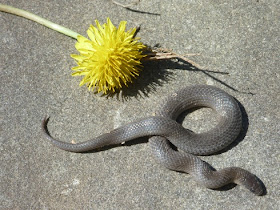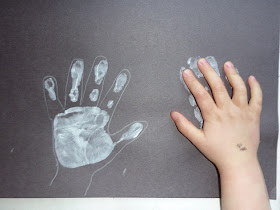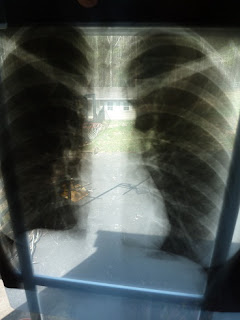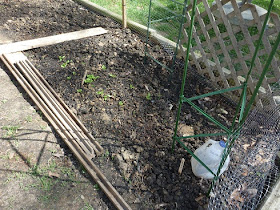
Gardening continues to be a rewarding part of our home life. We all have an incredible enthusiasm for our new gardening adventures!
Here's a glimpse at our veggie garden. I put in planks to keep ED and the others from wandering all over the garden. They enjoy balancing along them and have claimed certain sections for themselves!
We already have quite a large number of lettuce plants (since that's one of the first things you can plant!) I wonder how much we'll actually eat and how much we'll try to give away!
We also transplanted some tomato plants and hope it's not too early for them. (The milk jug is there to help protect it.)
While we were working in the garden, ED was digging in the dirt and uncovered a toad!
 |
| A little while later we spotted another toad when we were moving a rotten log. The kids made a habitat with tissues, grass, sticks, etc. |
While still working in the garden I moved some weed cloth aside and LD saw a snake. We took a picture and then I managed to get a shovel underneath the loose dirt and flung it into a bin to take it away from the garden.
 |
| I believe this is a northern brown snake -- non-venomous. |
 |
| The northern brown snake eats things like earthworms, slugs and spiders. |
 |
| LD spotted this bug. I don't know what kind it is, but it sure is bright green! |

It's now been a couple of weeks since we planted our 50 strawberry plants. All but one of them survived and are doing really well. Since we eat a lot of fruit -- we're pretty excited about this.
Last weekend I planted two apple trees and a peach tree. And -- I also managed to get the five raspberry plants planted as well. The raspberries just look like sticks in the ground at the moment, so they aren't worth a photo!
We have a lot of garden areas and I have probably spent 10 hours carting and spreading truckload after truckload of mulch. Whew! Hard work, but it sure is rewarding!
 |
| Yay! The strawberry plants are thriving (so far!) |
LD has been interested in plants for well over a year now -- closer to two years if I think back about it. I came across a gardening program/curriculum and decided to give it a go. It's called the
Junior Master Gardener Program. It is designed for kids in grades 3 to 5. It incorporates lots and lots of hands on activities, songs, science experiments, writing and more. There are individual activities and community oriented projects. It just came in the mail and I am absolutely thrilled (and LD is beside himself too. He jumped right in!)!
Here is their power point tutorial from their website if you are interested in learning more.
Since I knew little about it, I didn't know whether to buy just the handbook or the instructor's guide as well. I'm glad I got both. The instructor's guide has lots more of the hands-on activities. The instructor's manual is 365 pages.
Chapters include
1) Plant Growth and Development
2. Soils and Water
3. Ecology and Environmental Horticulture
4. Insects and Diseases
5. Landscape Horticulture
6. Fruits and Nuts
7. Vegetables and Herbs
8. Life Skills and Career Exploration
Each chapter of the
Junior Master Gardener workbook begins with a colorful picture and discussion of the topic.
The activities are quite varied -- observing and drawing, planting, exploring & looking for things, doing experiments, doing crafts and on and on.
Here are a couple examples from the beginning of the workbook:
Create a craft
Find plants with different types of roots
Count the rings on the stump
Find different leaves outside
Draw them in the boxes on that page
I was going to share our first couple activities, but I'm out of time and need to save that for another day/another posting.
If you are gardening with your preschooler and are interested in a preschool curriculum -- be sure to check out the wonderful activities over at homeschool creations. She made a wonderful Garden Preschool Pack.
I learned about the HSV Garden Challenge and have been thoroughly enjoying checking out other people's gardening progress. There are links to more than 100 people's gardening adventures. Thanks to the people who organized that -- how amazing to link in with great community of people!


















































